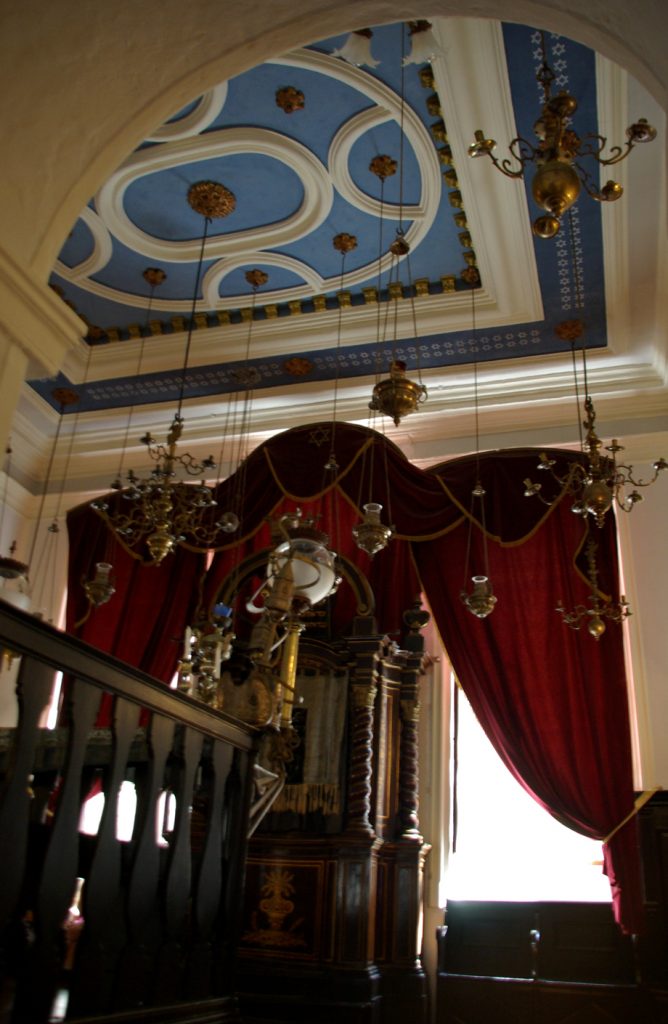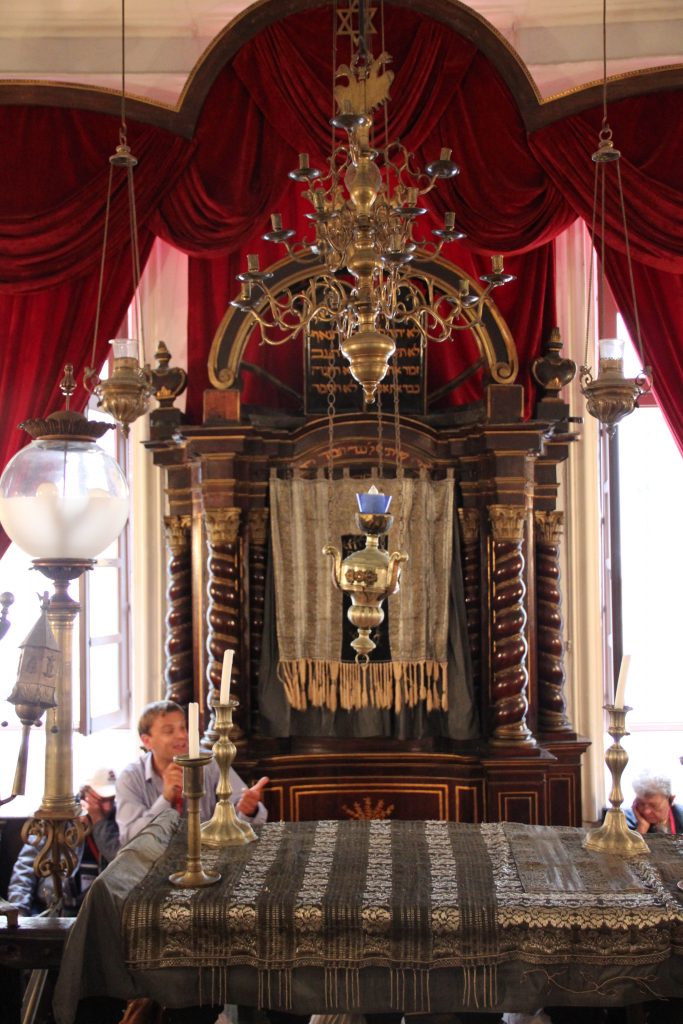The earliest refugees from the Iberian Peninsula arrived in Ragusa (present-day Dubrovnik) at the end of the fifteenth century, at a time when the republic, still under nominal supervision by Hungary for a few more decades, had reached its apex.

The early years were tumultuous: forced exile in 1515 was followed by a return several years later. With reinforcements of fellow Jews coming in through Greece and Albania, the city’s small Jewish community would be recognized in 1538 as Univeritas Haebroru or Università degli Ebrei (Hebrew University), since Ragusa’s education leaders used Latin as much as Italian as an official language. Doctor Amatus Lusitanus, of Portuguese origin (as his name suggests), wrote seven books during this time describing the 700 illnesses he had treated.
The ghetto was created several years later, in 1546, on Zudioska Street, enclosed by gates at both ends. A 1745 census reveals, however, that 78 people were living in the ghetto’s nineteen houses while 103 others were permitted to live outside. During this period, moreover, Jews earned a status near that of the rest of their fellow citizens, as proven by their passports: the passports were printed in Italian for voyages across the Mediterranean and in Serbian for trips toward the Ottoman lands.
The size of the Jewish community remained steady until the Second World War, when more than 1000 Jews from Yugoslavia and other countries under the Reich’s domination flooded into the Italian zone. Soon transferred to internment camps on the islands off the coast, several hundred Jewish prisoners managed to escape before the Italian debacle in September 1943 and the region’s subsequent seizure by German troops. Only a few dozen people of Jewish origin still live in Dubrovnik, where the presence of tourists is often necessary to form a minyan at the synagogue.
After the Second World War, about thirty Jews left to live in Israel. This was the number of Jews who lived in Dubrovnik in 1969. The small number of Jews in the city and the Dalmatian region forced the city’s rabbi to officiate in the surrounding area. Today the small remaining community is part of the Federation of Jewish Communities in Croatia, based in Zagreb.
The synagogue
The three-story synagogue, whose origins date to the fourteenth century, has served as a house of worship since 1408. In fact, it is one of the oldest Sephardic sites in the world. It can be distinguished from the other house of Zudioska Street only by its slightly larger second-story windows with their traditional Arabic trim. In the seventeenth century, the synagogue benefited from passageways through the other houses on the block, which allowed ghetto dwellers to come and go without breaking curfew.

Among the religious artifacts that managed to remain hidden during the war are three scrolls of the Torah dating back to the first Sephardic immigration. A little under 24 inches wide, their outer layers are made from linen and rolled lengthwise, knotted in a particular way called “Ragusa point”. The scrolls also bear the names of their likely donors: the Terni, Maestro, and Russi families. A silk, cotton-padded bedspread of undeniably Iberian origin is also on display at the synagogue. Seriously damaged by a Serbian bombardment during the 1992-95 war, the synagogue has since been restored.
The cemetery
The current cemetery dates to only the nineteenth century. In 1911, however, every grave from the old Jewish cemetery, including those from the early sixteenth century, was transferred here. Unfortunately, during the First World War, most of the gravestones were used to reinforce the citadel walls, and only thirty of them remain today.
Some are flat and rectangular in classic Sephardic style, with Hebrew inscriptions and pseudo-heraldic decorations (coats of arms, crowns, and fleurs de lys), of obvious Italian influence. Others are more eastern-inspired and feature images of the sun, moon, or stars. The remaining ones are obelisk-shaped and reminiscent of the Austro-Hungarian period, their Hebrew inscriptions proving to be their only distinctively Jewish aspect. The cemetery is located in the Boninovo area, just beyond the ramparts.